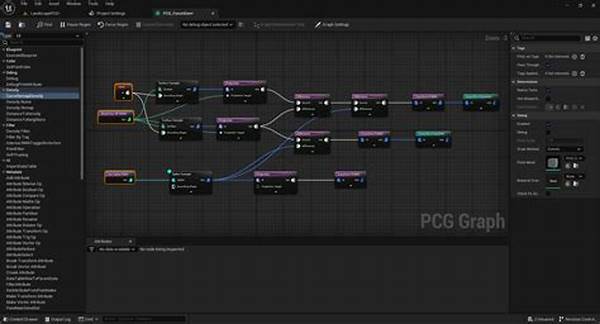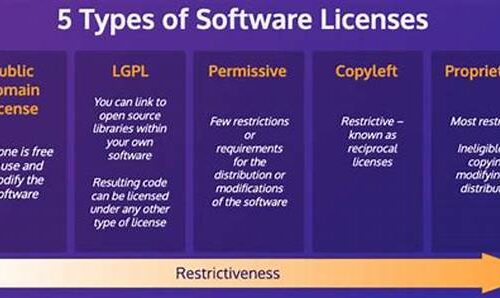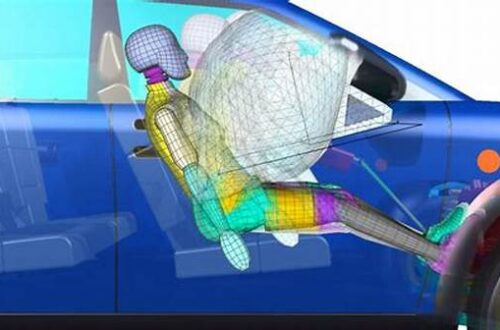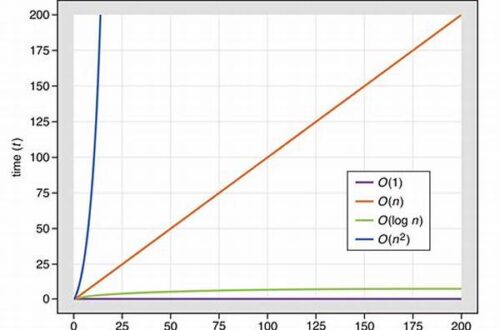Hey there, fellow tech enthusiasts! Have you ever dived into a video game and found yourself completely captivated by its expansive worlds or those endlessly unique, challenging scenarios? Well, a lot of the magic behind these awe-inspiring moments comes from something called procedural content generation. It’s like that secret sauce or behind-the-scenes wizardry that brings diversity and freshness into gaming and other digital realms. If you’re curious about what makes repeated playthroughs less repetitive and more engaging, you’ve landed at the right place. Let’s unravel the wonders of procedural content generation together!
Read Now : Implementing Physics In Gameplay Mechanics
Understanding Procedural Content Generation
So, what exactly is procedural content generation? Imagine an artist painting a new masterpiece every time you glance at their canvas. That’s the gist of it! Procedural content generation leverages algorithms and a bit of randomness to craft game content on the fly. It can generate everything from vast landscapes to the little details in a game world, like items and quests. This whole process ensures each experience is unique — no two players will have identical adventures. The beauty of it is in its unpredictability and creativity, offering endless possibilities without needing a massive team of developers designing every aspect. Because of this capability, developers can focus more resources on innovative features and gameplay mechanics rather than spending months on level design. It’s truly a game-changer in both the literal and metaphorical sense. Neat, right?
The Role of Algorithms in PCG
1. Algorithms are the backbone of procedural content generation. They outline the rules and parameters within which content is created.
2. By adjusting algorithm settings, developers can vary content complexity, depth, and uniqueness. This makes each user’s experience distinct.
3. Procedural content generation relies on random seeds. This means, even with the same initial conditions, outcomes can vary greatly.
4. It saves time and resources, as algorithms automate what would be time-intensive, manual tasks.
5. From landscapes to loot, procedural systems ensure content keeps players engaged by adding variety and surprise.
Benefits of Procedural Content Generation
The efficacy of procedural content generation lies not just in creating fresh encounters but in how it enhances gaming experiences as a whole. It’s like handing a blank canvas to an immensely creative mind every single time. This can be particularly useful in massive multiplayer online games where redundancy can break immersion. When each player’s journey is distinct, there’s a perpetual sense of discovery awaiting them. Moreover, by automating a chunk of content creation, developers can allocate resources to craft more intricate storylines or innovative gameplay mechanics. The efficiency gained also translates into reduced development costs, opening doors for indie developers to rival bigger titles with innovative ideas. So, next time you wander into a video game realm and find yourself marveling at its endless uniqueness, thank procedural content generation for making it possible!
Read Now : Beginner-friendly Game Development Lessons
The Challenges in Procedural Content Generation
While procedural content generation sounds like pure magic, it’s not without its hurdles! Crafting something randomly can sometimes lead to less-than-stellar outcomes. Imagine unexpected glitches or downright nonsensical level designs — not all that glitters is gold. There’s a sweet balance developers need to maintain between randomness and coherent gameplay. Another challenge is ensuring that these procedurally generated worlds feel as rich and meaningful as their handcrafted counterparts. While automation can crank out an endless array of dungeons or quests, the lack of a carefully curated touch might strip them of depth and story. Thus, implementing procedural content generation demands thoughtful design and rigorous testing to achieve optimal results, ensuring that every pixel contributes value to the player.
Procedural Content Generation in Indie Games
For indie game developers, procedural content generation is like finding a treasure trove. It empowers small teams with limited budgets to craft expansive and captivating worlds. Instead of dedicating countless hours to manually designing each level, they can focus more on innovative concepts or unique mechanics. This is why many indie titles that might not boast AAA budgets offer some of the most interesting gameplay experiences. The trade-off is real — craft a unique, engaging game with fewer resources. There’s this aura of genuine creativity, as each adventure becomes a fresh take on what players thought they knew. In essence, procedural systems give indie developers the footing they need to punch above their weight, delivering titles that hold their ground against big studio productions.
Future of Procedural Content Generation
What’s in the cards for procedural content generation? Innovative technologies continue evolving, and so does PCG. With the rise of AI and machine learning, future systems could become smarter, crafting worlds that adapt even more seamlessly to player actions and behavior. This means more personalized gaming experiences. Imagine worlds that shift not just on random seeds but in response to your unique play style. With such advancements, procedural worlds will feel more dynamic and alive, reflecting choices made by each player. It’s an exciting horizon where AI-driven systems meld with creative direction, paving the way for some truly groundbreaking gaming experiences. So buckle up, because the next evolution of procedural content generation promises to redefine the landscape of gaming!
Conclusion: The Power of Procedural Content Generation
As we wrap up this journey, it becomes clear that procedural content generation is a remarkable tool. It’s transformed how developers approach game design, giving rise to dynamic, ever-changing worlds that captivate players. From indie developers to massive studios, everyone can leverage this tech to push creative boundaries further. Remember the excitement of discovering an unexpected twist or an epic landscape? That’s PCG working its magic. As technologies advance, its role in shaping digital landscapes will only deepen. For gamers, it means an endless array of adventures and stories, each shaped by both the hands of technology and the player’s unique exploration. Indeed, we’re embarking on an exciting next chapter in gaming, and procedural content generation is playing a starring role!





